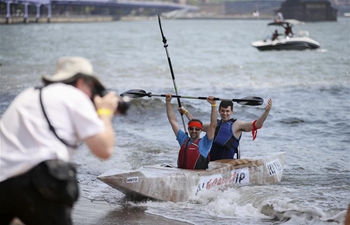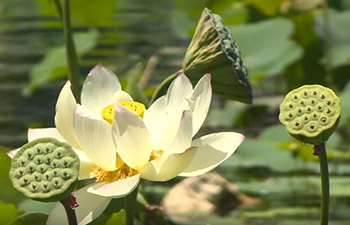LOS ANGELES, July 17 (Xinhua) -- In response to rising water scarcity, researchers at U.S. Argonne National Laboratory are studying the most advanced research innovations that may address global clean water accessibility.
Argonne National Laboratory researcher Seth Darling presented their findings this week in the Journal of Applied Physics. The comprehensive paper focuses on how the interfaces between materials and water continue to play a key role in advancing water treatment technologies.
Material interfaces play a particularly central role in this arena, Darling said in the paper. Interfaces determine the performance of technologies like water quality sensors, filtration membranes and even pipes.
According to the new study, adsorption is one of the best mechanisms for cleaning water. In this process, contaminants adhere to the surface of porous materials to maximize surface-to-volume ratio. Highly porous activated carbon is the most extensively used because it is abundant and inexpensive.
Reusability is a critical metric for sorbent materials, which can markedly reduce costs and increase the sustainability of a treatment process. Darling believes polymeric foam sponges are promising candidates for this approach.
Meanwhile, researchers are designing next-generation sorbents that have higher specificity, more binding power to target individual pollutants. Ideally, researchers could tailor interfacial properties to adsorb specific molecules to capture challenging water contaminants like nutrients and heavy metals.
"We have a water crisis, which is based on increasing population, urbanization and climate disruption. And there's unsustainable use of our water," Darling was quoted as saying in a press release. "Part of addressing this is through policy solutions, but we also need new, more energy-efficient and cost-effective technologies."













